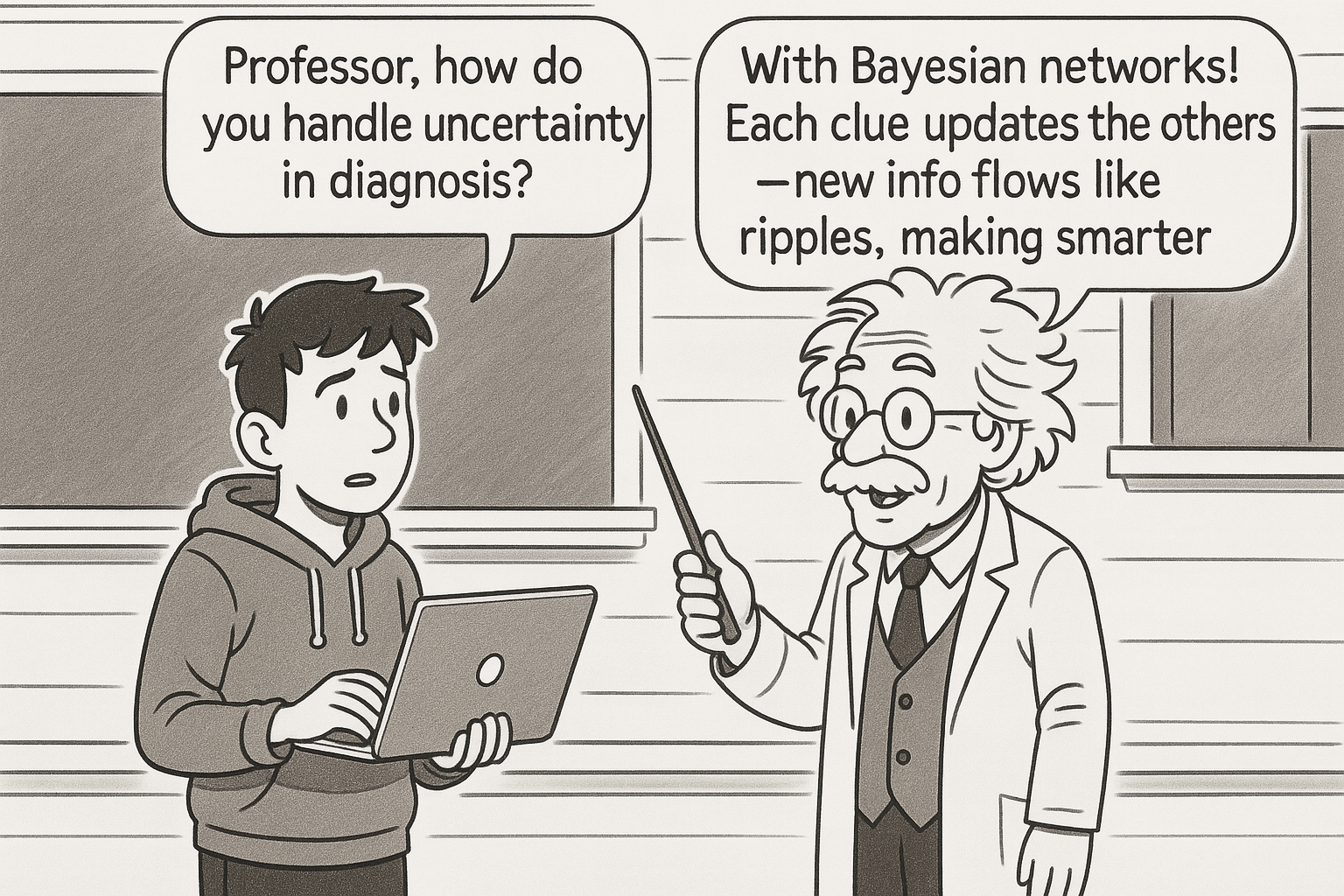Introduction
In 1988, Judea Pearl published "Probabilistic Reasoning in Intelligent Systems: Networks of Plausible Inference," revolutionising how artificial intelligence systems handle uncertainty and reasoning under incomplete information. This work established Pearl as a pioneer of the probabilistic approach to artificial intelligence and the development of Bayesian networks, later earning him the Turing Award in 2011 for fundamental contributions to AI. Before Pearl's work, AI systems primarily relied on rule-based approaches that struggled with uncertainty, making this book a pivotal shift towards mathematically rigorous probabilistic reasoning.
"Probabilistic networks transform uncertain reasoning from an art of approximation into a science of rigorous mathematical inference."
Core Ideas
Pearl's central innovation was the development of belief networks (now called Bayesian networks) that combine probability theory with graph theory to represent probabilistic knowledge and enable efficient reasoning under uncertainty. The book distinguishes between syntactic and semantic approaches to uncertainty, offering network-based techniques that provide a mechanism for making semantics-based systems operational.
The core concept revolves around representing uncertain knowledge as a directed acyclic graph where nodes represent random variables and edges represent probabilistic dependencies between them. Each node contains conditional probability tables that specify the probability of that variable given its parent nodes. This structure allows complex joint probability distributions to be factorised into smaller, more manageable components.
Pearl developed the belief propagation algorithm, which performs exact inference in these networks by passing messages between nodes to update beliefs when new evidence becomes available. The algorithm uses bi-directional propagation with π vectors (prior evidence) flowing downward and λ vectors (diagnostic evidence) flowing upward through the network.
The book also provided a unifying perspective on other AI approaches to uncertainty, including the Dempster-Shafer formalism, truth maintenance systems, and nonmonotonic logic, showing how these different frameworks relate to probabilistic reasoning.
Breaking Down the Key Concepts
Think of a Bayesian network as a smart decision-making framework that mirrors how we naturally reason about uncertain situations. Just as you might consider multiple factors before diagnosing why your mobile phone isn't working—checking the battery, network signal, or software issues—a Bayesian network represents these relationships mathematically.
Each node in the network acts like a question with multiple possible answers, and the edges show which factors influence others. The conditional probability tables are like experience-based rules: "If the battery is low (90% probability) and the phone won't start, then there's a 95% chance the battery is the problem."
The genius of Pearl's approach lies in how these networks handle the flow of information. When you learn something new—like discovering your charger is broken—this information propagates through the network, automatically updating the probabilities of related factors. It's similar to how learning one fact helps you deduce others, but now it's mathematically precise.
The belief propagation algorithm works like a conversation between different parts of your brain. Each node collects information from its neighbours, processes it according to its probability rules, and shares updated beliefs with connected nodes. This continues until the entire network reaches a consistent state that reflects all available evidence.

Results and Significance
Pearl's work has revolutionised the field of AI and made Bayesian networks ubiquitous in computer science today. The network-propagation techniques serve as a mechanism for combining the theoretical coherence of probability theory with modern demands of reasoning-systems technology: modular declarative inputs, conceptually meaningful inferences, and parallel distributed computation.
Pearl's contributions form the mathematical foundation underlying numerous applications. Modern machine learning frameworks, recommendation systems, medical diagnosis software, and fraud detection systems all trace their probabilistic reasoning capabilities back to these principles. Companies like Google, Amazon, and domestic firms building AI solutions rely heavily on probabilistic graphical models derived from Pearl's work.
The book demonstrated fundamental limitations of rule-based systems for reasoning with uncertainty, showing that beliefs held with uncertainty are less modular than certain beliefs and cannot be represented efficiently in traditional rule-based frameworks. This insight shifted the AI field towards more sophisticated probabilistic approaches.
Pearl's work established that probabilistic reasoning could be made computationally tractable through clever algorithmic design and graph-based representations. For tree-structured networks, the belief propagation algorithm computes exact marginal probabilities efficiently, terminating after just two passes through the network.
The book's impact extends beyond computer science into fields like medicine, economics, and social sciences, where reasoning under uncertainty is crucial. Pearl's framework provides a principled way to combine evidence from multiple sources, update beliefs as new information arrives, and make optimal decisions under uncertainty.
Original book can be found here - https://dl.acm.org/doi/book/10.5555/534975